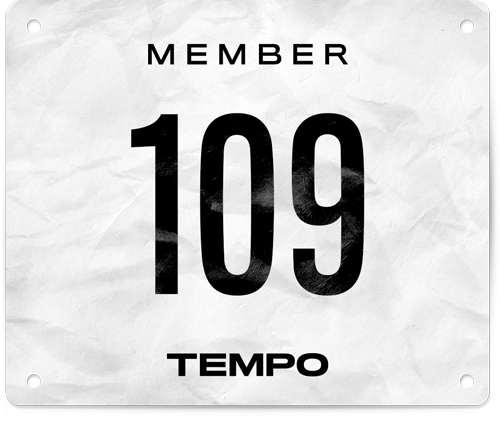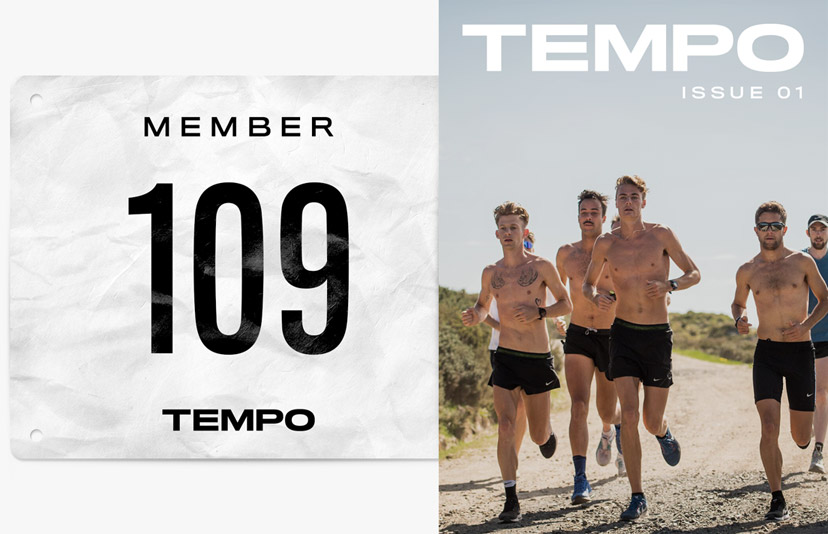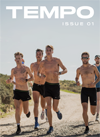Culture
Form and Function: Talking design and running with Tom Daly
The co-founder of District Vision is much more than a former fashion exec
Sitting down with Tom Daly provides a rare opportunity to enter the mind of someone blazing a new trail in the world of urban running. Daly, along with his partner Max Vallot, co-founded District Vision in 2015 after leaving their careers in the fashion industry.
In two short years, District Vision has made its own lane, focusing on the principles that are important in the personal lives of Daly and Vallot, both keen runners but also immersed in the worlds of meditation and well-being.
They’ve established a strong line of performance eyewear and recently launched a wider range of accessories.
We took five with Daly to get his thoughts on crew culture, what’s next for District Vision, and what his own race goals look like in 2018.
Firstly, for anyone wondering why two fashion industry veterans haven’t launched an apparel line under District Vision, Daly has a refreshing and honest explanation.
“We simply didn’t have a reason to do it. We’re always looking to add something to the market, some sort of quantifiable technology or point of difference. If you look at eyewear and now our socks, we have a clear quantifiable technology. In 2018 we’ll release something that we think will add to the conversation”.
Daly and Vallot take an exhaustive approach to product development, bucking the trend in a world of fast fashion and speed to market. Instead, they use a huge network of running teams and individual athletes around the world for ongoing feedback.
“We studied the feet of athletes and runners for the last 18-24 months so we understand what one needs to improve not only performance but also well-being. Running is so hard on the joints and the body, and we’re very cognisant of the lifetime of a runner”
With the recent release of their 'Sindo' sock range, Daly and Vallot look to solve a major issue for long distance runners.
“One of the major issues is moisture build up around the foot, particularly the bottom of the foot, which causes blistering. So our sock is about the movement of moisture and transporting that moisture from the bottom of the foot to the top so you're less likely to blister”.
A runner himself, Daly is a member of the Black Roses NYC and recently ran a 3:10 at the New York City Marathon. As a Brit living in NYC and running with the Roses, I was interested in Daly’s views of the current crew environment.
“The urban running movement started in a counterculture way in the sense that it was quite socially driven, without the clear parameters of a performance or collegiate system. It has given rise to different types of expression and how people understand running and their own access points to it.
Now in NYC, teams that pioneered the movement have taken on different forms. Some are quite performance driven and some have stayed in a positive social culture movement, which is epitomised by The November Project.
I think we have a really interesting situation today, that ‘crew’ scene has blended with the running performance club scene, and that creates a new sort of hybrid version of what we understand a club to be".
“They’ll keep evolving and reinventing themselves in all ends of the spectrum, from performance to well-being to social change ends of the spectrum. The important thing is that these crews keep using running as a way to help people”
Daly and Vallot have had close links to the crew running scene since the inception of District Vision, which they credit in part for their early success. Knox Robinson, Captain and co-founder of Black Roses NYC, has been a District Vision athlete since launch, and even has a trail running case named after him.
“We came from the crew system in a sense. I was running with The Black Roses NYC. When Max and I started to work together it wasn't like other brands because we were already in this environment. The people we were shooting were our friends, it was just a casual documentation of what was already happening. People probably think it was this big smart marketing campaign but it wasn’t at all!"
Daly’s partner, Max Vallot, has a keen interest in meditation, recently heading to notorious New York prison facility Rikers Island to lead inmates in a series of workshops. As Daly and Vallot take District Vision along a path of running and wellness, Daly explains how meditation helps his running.
“You have to find your own relationship with meditation. Personally I think meditation starts to change you as a person first and then a runner. It's quite a broad spectrum. You can look at it literally and look at how you can use it during a race, for example during the marathon when I was struggling I definitely used a mantra.
There can also be more abstract benefits of learning how to respond to your body during a training block, knowing when to back off, and more.
From there you learn how to maximise your performance and enjoyment of the thing you love, not getting too caught up in it and letting it stress you out. We see with a lot of people, it starts as this expression of freedom and enjoyment, but then it becomes so stressful that you end up hating it”.
As both a runner and someone who's always looking to find improvement, what’s next for Daly once the buzz of the recent marathon wears off?
“I’m trying to figure out my running in 2018 right now. We’ve spoken about races here in the US, but we’re fascinated by the ekiden format, so maybe we do something like that in 2018.
We’re interested in how the race format can evolve to include more people.
On top of that, as with any self respecting runner I’m trying to push the threshold in a centred way, maybe looking for a BQ race next year and being able to race Boston in 2019.
You can’t get too lost in that world though, its a rat race that we fall into at times”.
Editor's Note: Main image courtesy of Chadwick Tyler


